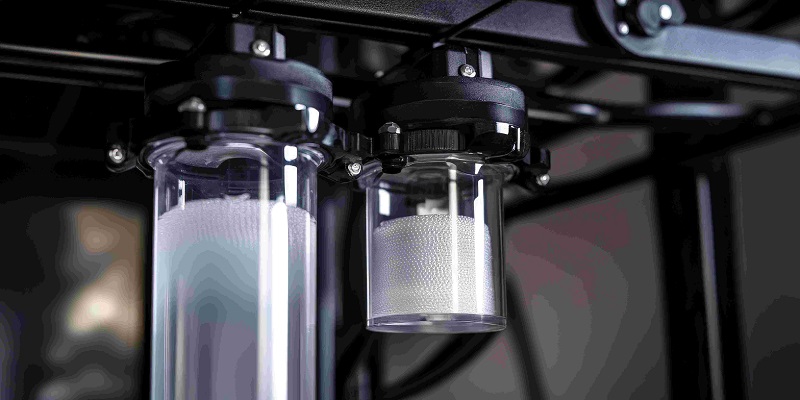You want to live sustainably—reducing waste, conserving resources, and minimizing your environmental footprint. But have you considered how your home’s clean water quality affects your green goals? Hard water isn’t just an annoyance; it’s a hidden source of inefficiency, waste, and unnecessary environmental strain.
The solution? Water softening. Indeed, processed clean water has far-reaching benefits for both your household and the planet. Here’s everything you need to know about how sustainable water treatment, particularly softening, helps you live a greener, cleaner, and more cost-effective life.
Why Hard Water Is A Hidden Environmental Problem
Hard water contains high levels of dissolved magnesium and calcium. While these minerals aren’t harmful to drink, they create a cascade of problems for your home—and the environment.
- Scale Buildup Wastes Energy and Shortens Appliance Lifespans
When hard water flows through pipes and appliances, it leaves behind mineral deposits called ‘scale.’ Over time, this buildup reduces water pressure (forcing pumps to work harder), insulates water heaters (making them less efficient), and clogs dishwasher and washing machine water cycle components (leading to premature breakdowns).
The result? More frequent replacements, increased electronic waste, and higher energy demand and consumption—all of which strain natural resources and hinder a sustainable water cycle.
- More Soap and Detergent Waste Ends up in Waterways
Hard water reacts with soap, forming a sticky scum instead of a rich lather. This means you need more shampoo, laundry detergent, and dish soap to get the same cleaning power.
The consequences include extra chemicals flowing into water treatment plants, increased levels of phosphates and surfactants in rivers and lakes that harm aquatic life, the being unsafe for water consumption, and the like.
- Hard Water Forces You to Waste More Water
Have you noticed any white spots on dishes or soap residue on your skin lately? That’s hard water at work. To compensate, you might engage in unsustainable water habits which contribute to further water scarcity. A water softener eliminates these inefficiencies, helping you conserve water effortlessly.
How Water Softening Supports a Sustainable Lifestyle
Switching to softened water isn’t just about convenience—it’s a powerful step toward sustainability. Eco-friendly water solutions aid you in being green by:
- Extends the Life of Appliances, Reducing E-Waste
Appliances last years longer with softened water because of the following: no scale buildup in appliances, water-consuming home gadgets operate at top efficiency, pipes require fewer repairs, and so on.
Fewer replacements mean less manufacturing demand and less junk in landfills.
- Cuts Down on Harmful Chemical Use
With softened water, you’ll need less laundry detergent, fewer harsh cleaning products for sinks and showers, and the like. This means fewer toxic chemicals that need to be processed in industrial water treatment facilities and fewer plastic bottles in recycling bins. All those thanks to switching to soft water.
- Lowers Your Home’s Energy Consumption
Since scale insulates heat exchangers, hard water makes your water heater work up to a third harder. Softened water improves efficiency, which means you’ll have lower electricity or gas bills, reduced carbon footprint, and so on – all of which slows down environmental degradation.
- Saves Thousands of Gallons of Water Annually
Soft water rinses cleaner, so you don’t need to rewash clothes, use less water scrubbing soap scum off showers, and avoid excessive rinsing of dishes. Over a year, this can save hundreds (or even thousands) of gallons of water per household.
Choosing the Most Eco-Friendly Water Softener
Not all water softener devices are equally sustainable. Check each one below to find out more and to pick which one works best for you:
Salt-free water conditioners work by using catalytic media to neutralize minerals without salt. They’re best for eco-conscious households with moderate hardness. Their benefits? No wastewater discharge and no added sodium.
Next, dual-tank salt-based softeners work by alternating between two resin tanks, reducing regeneration cycles. They’re best for larger households with very hard water. Their benefits? They make use of less salt and water than traditional softeners.
Then, template-assisted crystallization (TAC) systems function by transforming minerals into harmless crystals that don’t stick. They’re ideal for those who want water softening without chemicals. They have zero wastewater and no maintenance.
Finally, magnetic or electronic descalers work by using electromagnetic fields to alter mineral behavior. They’re best used for light hardness or renters who can’t install a full system. The benefits of using them? No salt, no wastewater, and easy installation.
Pair Softening with Other Sustainable Water Habits
For maximum impact, combine water softening with these eco-friendly practices:
- Install low-flow fixtures. Aerated faucets and low-flow showerheads reduce water use without sacrificing pressure.
- Harvest rainwater for non-potable uses. Use collected rainwater for gardening, car washing, or toilet flushing.
- Fix leaks immediately.
- Use phosphate-free detergents. Even with softened water, eco-friendly soaps keep waterways cleaner.
Final Thoughts: Small Changes, Big Environmental Impact
You don’t have to overhaul your life to live sustainably. Sometimes, the most effective changes are the simplest. Installing a water softener is a low-effort, high-reward upgrade that helps you save money on utilities and repairs, reduces waste in water, energy, and plastic, and makes daily life easier with better cleaning, softer skin, and spot-free dishes.
Ready to make the switch? Start by testing your water hardness, then explore eco-friendly softening options. Your home—and the environment—will thank you.




